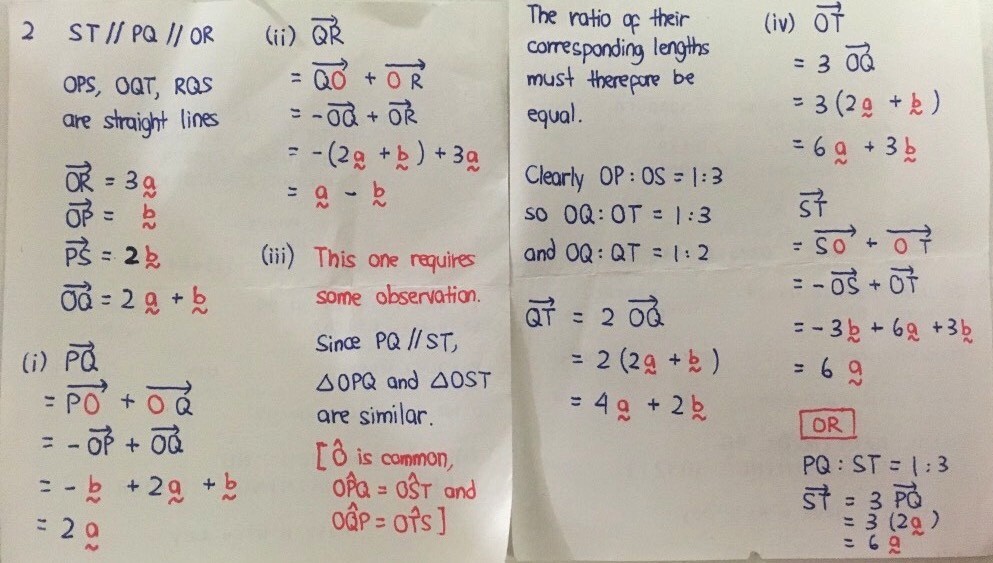Eric Nicholas K's answer to Lynn's Secondary 4 E Maths Singapore question.
done
1 Upvotes
clear 0 Downvotes
Part a iii is probably a tough one. This requires you to make length comparisons based on similar triangles.
Date Posted:
5 years ago



There are two kinds of pairs of triangles which you will see in part b.
Case 1: Triangles have same height, but different base (or the other way round). Their area ratio is the same as their base ratio (or height ratio if height is the one different, but most of the time we take the different one to be the base).
Case 2. The two triangles which we have picked out are similar triangles. Their area ratio is the square of their length ratio.